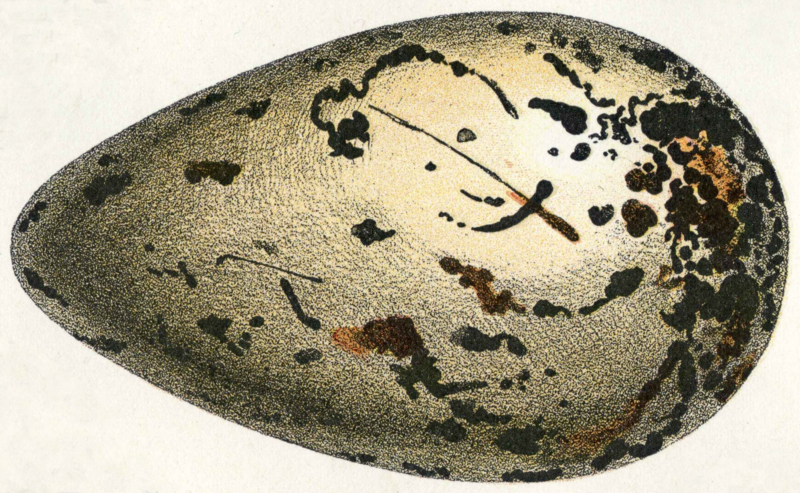A miner writes to a New Zealand paper to say that whilst he and his mate were prospecting for gold last autumn, between lake Rotorua and the Cannibal Gorges, in the province of Nelson, he saw what he believed to be the moa. His description is as follows: -
"We heard a strange screeching noise in a gully about a hundred yards from where we were camped, and went to where the noise proceeded from, and to our surprise we saw two gigantic birds coming towards us. They did not show the least alarm at seeing us, but continued coming to where we were, so we took to our heels. We heard them two or three times that night again. Having no gun with us we thought it advisable to start the next morning, for fear they would tackle us. One of them was apparently about twelve feet high, and the other somewhat smaller, with feathers resembling the kiwi's."
Hardwicke's Science-Gossip, vol. XV, 1879.
Some people annoying a couple of moas, as imagined by Heinrich Harder (via Wikimedia).
FF Notes:
There were nine species of moa on New Zealand. They were flightless but could kick the arse of most other creatures due to their enormous size. Like the miners claimed, some did get as big as 12 feet tall. But Wikipedia begs to differ on the sound they would have made - at least some had tracheal rings, which are associated with resonating deep calls in extant species of birds.
It's thought that they were all extinct by 1445, hunted by the Maori. They were only 'rediscovered' in the 1830s, when Sir Richard Owen (founder of the Natural History Museum in London) figured out what sort of bone he'd been sent by his Australian uncle.
Sightings persist until very recently. You can read a paper detailing some of them here.
But it's probably unlikely that they still exist, sadly.
The idea that they could still exist, or people want them to exist, or people want to tell stories about them existing, really interests me. One of my favourite creatures is the thylacine - a similarly beleaguered animal that lived in Australia until its eventual extinction in the 1930s. People are still seeing those stripey marsupials on and off. Sometimes I go to visit a real (albeit dusty) one in Bristol Museum.
Later in the magazine, a cynic writes that they can't find a Lake Rotorua on the south island of NZ, nor the 'Cannibal Gorge'. But actually they're there, although it's a pretty big area between them. It's nice to think the moas might have been about. But I should get a grip.

